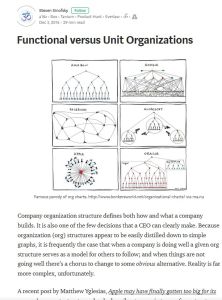
Recommendation
“Functional” or “unit” organization – which one is best for your business? In this detailed and pragmatic article, Steven Sinofsky, former president of Microsoft’s Windows division, tackles the myths and misconceptions surrounding structural reorganization endeavors. Using his time at Microsoft for exemplification, Sinofsky lays out the strengths and weaknesses of functional and unit organizational structures and lists basic insights about the challenge of reorganization. Although Sinofsky’s post would have benefited from a round of editing, getAbstract recommends this valuable article to managers pondering change.
Summary
About the Author
Steven Sinofsky is a board partner at Andreessen Horowitz and former president of Microsoft’s Windows division.








Comment on this summary